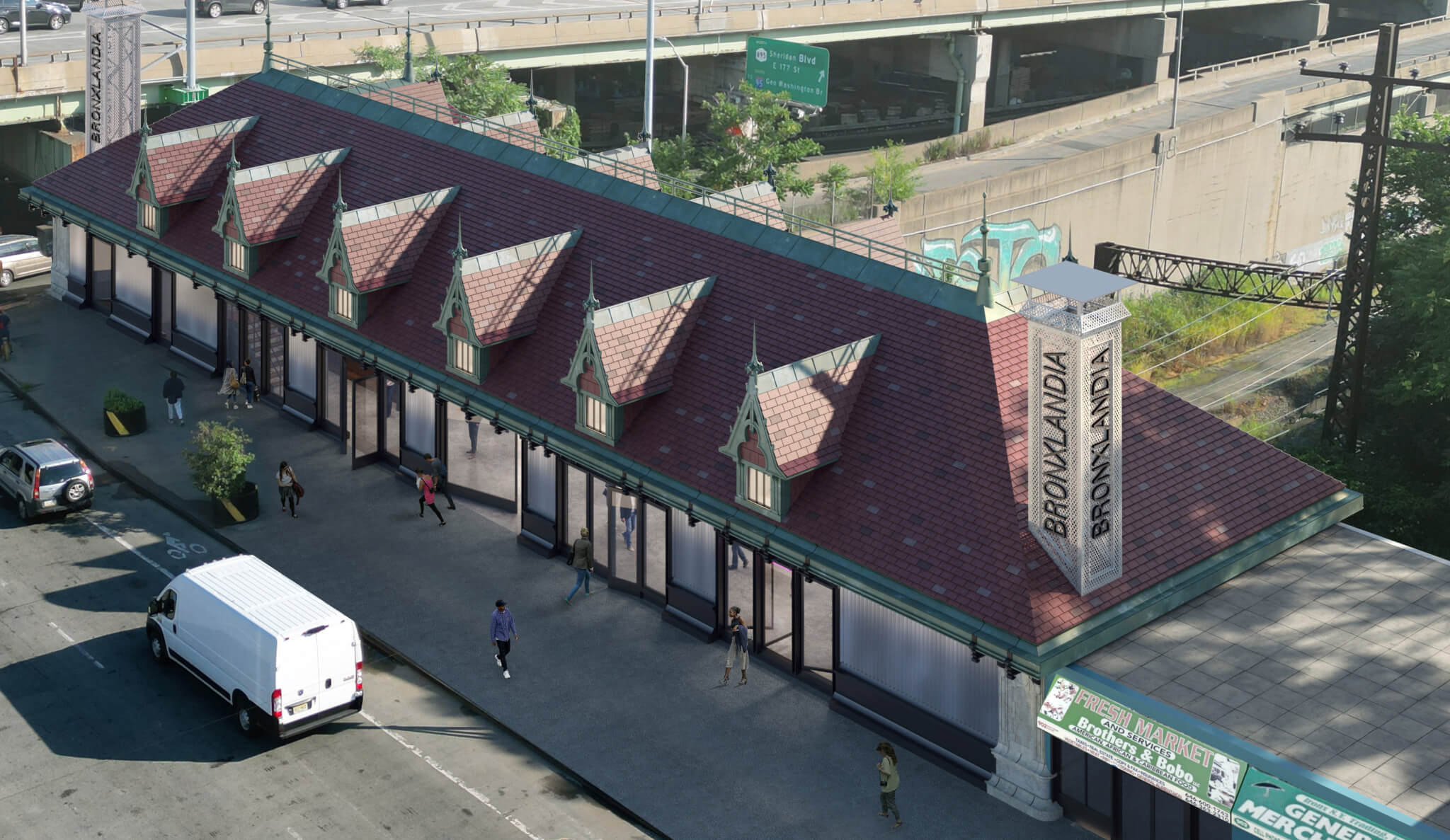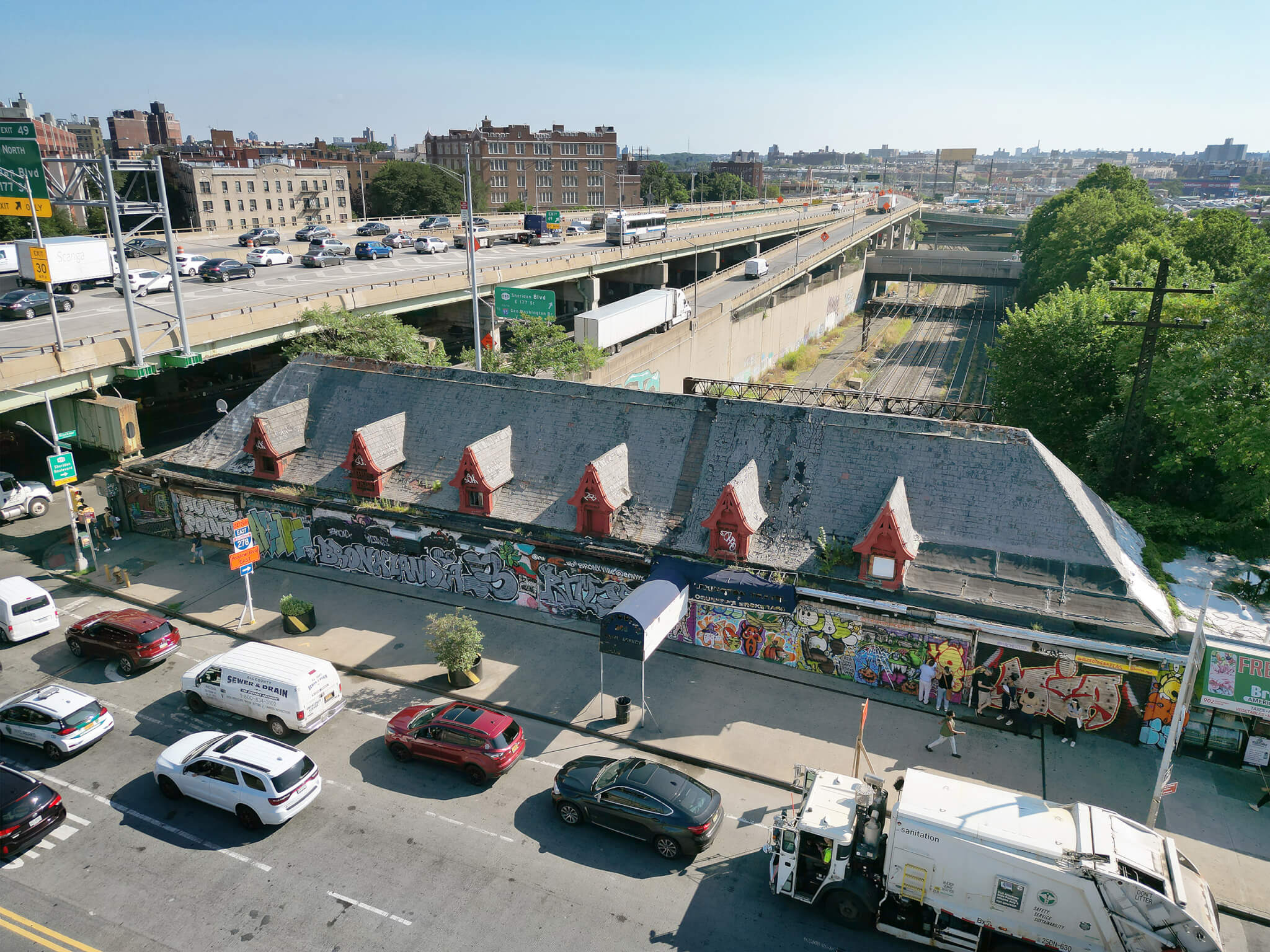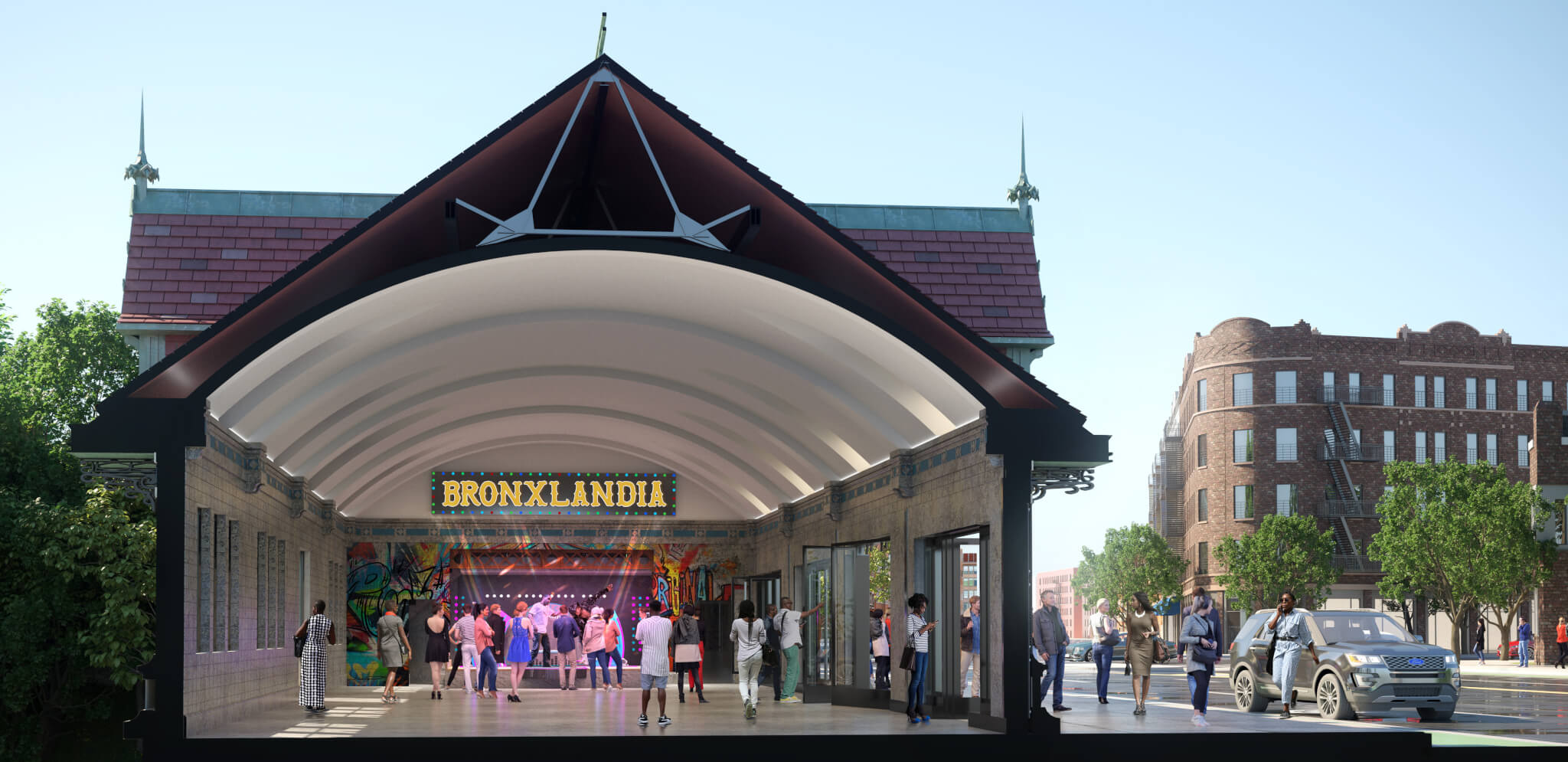For the past two years, urban revitalization strategy consultant and community-based developer Majora Carter has been operating Bronxlandia as a site for temporary events in a decommissioned Cass Gilbert–designed Hunts Point train station. Within the remains of the 1908 French Renaissance New York, Westchester, and Boston Rail (NYW&B) line stop, the MacArthur Award–winning Bronx native and author of Reclaim Your Community has hosted everything from under-the-radar music concerts and book events to pro wrestling matches and TED talks. Now Carter is launching the venue’s next phase as a restored and updated landmark designed around its latest function as a South Bronx-focused performance space.

Working from a theory of real estate investment Carter calls “restorative community development,” she acquired the Hunts Point rail station from Amtrak in 2016 with the initial aim of turning it into a food hall for local restaurant startups like Ghetto Gastro’s Black Power Kitchen. The Hunts Point station had a particular resonance for Carter, as her father worked as a Pullman porter. He was part of a generation of Black middle-class train attendants who had been at the forefront of the civil rights movement. He won $15,000 in a horse race and purchased a house nearby in the Bronx, which Carter grew up in.
Carter’s office also overlooks the station, which has been closed, along with passenger service on the NYW&B railway, since 1937. Commercial rail service continued on the track, now operated by Amtrak, which had leased the storefronts to the owner of the El Coche strip club from the 1970s through the 1990s. A nail salon and fried chicken takeout place sublet the other spaces for many years. In 2017 Carter started a café, Boogie Down Grind, a block away as one of her first developments in response to her inability to find high-quality coffee in the area.

Led by architect Jay Valgora, STUDIO V took on the Bronxlandia project in 2021 as a labor of love. He was inspired by Carter’s vision. Her core message of restorative development is simple: People in what she calls low-status communities—“places where inequality is assumed by people both inside and outside, where you feel like you need to measure success by how far you get away”—don’t have to move out of their neighborhoods to live in better ones.
“Our approach to real estate development was about creating the kind of spaces that folks could see themselves in—because they were the ones filling them,” Carter told AN. “Suddenly they were the draw, they were the reason why people would even want to come to or stay in the neighborhood, to see themselves literally being showcased. It was super exciting and still is, and we’re about to go into construction now.”
Initially, Carter struggled to raise capital. After a few years of stalled partnerships, she and her husband, James Chase, decided to demolish one of the storefronts themselves to uncover its vaulted ceiling and demonstrate its huge potential as a “third space” where people could gather outside of homes and workplaces. She moved away from her original food hall concept to one that benefited from reduced operational requirements: a performance-and-event space to host concerts, screenings, weddings, quinceañeras, gaming tournaments, and film shoots. She and Chase began running temporary events in 2021. Last year, they established a relationship with the climate tech company BlocPower, which is installing green building services and renovating the building envelope in addition to financing the work.

STUDIO V’s design calls for conservation and restoration of what remains of the Cass Gilbert station, though with a contemporary twist. Where they remain in salvageable condition, the three original brick walls clad in terra-cotta tiles and the terrazzo floors will be largely preserved and restored. The retail storefronts with metal gates will be replaced by wall-to-wall assemblies of glass, steel, and perforated metal. The station’s slate roof, patinated copper eaves, and French Renaissance dormers with Gothic trefoil motifs and finials will be restored. The original chimneys, removed in the 1930s, will be reconstructed as mesh cages containing heat pumps and energy-efficient mechanical systems. Signage from the nail salon, fried chicken place, and strip club will be preserved on the interior, while signs broadcasting Bronxlandia’s new identity will adorn these “ghost chimneys.” Historic preservation consultancy Higgins Quasebarth is helping Carter apply for landmark designation.
“I’m absolutely committed to a 21st century vision of the city and how we’re transforming cities to make them more livable,” Valgora said. “I don’t think those ideas are incompatible. The ideas of taking a 1908 Cass Gilbert train station that has been terribly neglected, restoring whole elements of it, and then weaving and collaging together contemporary elements that reflect the 21st century condition of the Bronx and Majora’s vision for the neighborhood are what is most exciting about the project.”
Stephen Zacks is a journalist and project organizer based in New York City.
A prior version of this article erroneously named the climate tech company involved with Bronxlandia. It is BlocPower, not BlocTech.











